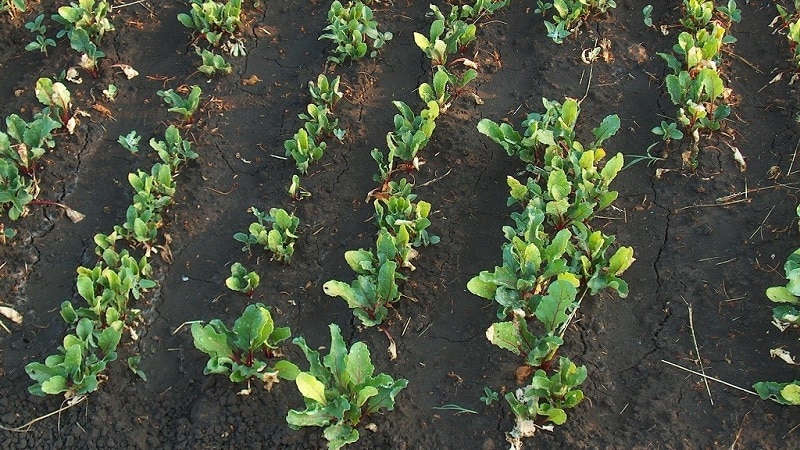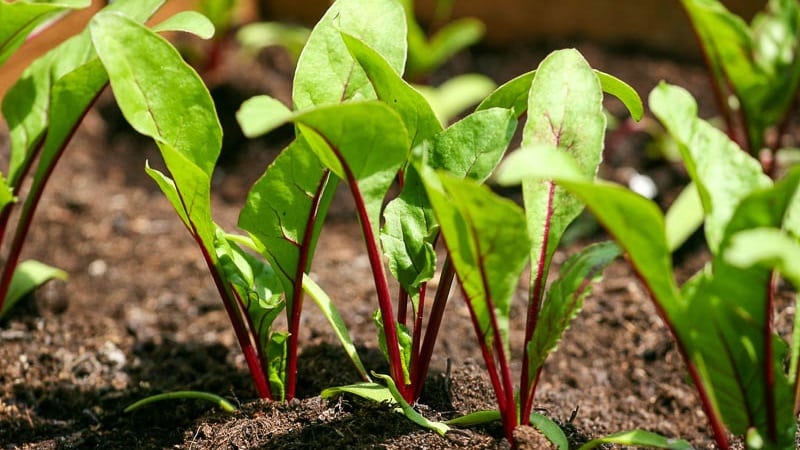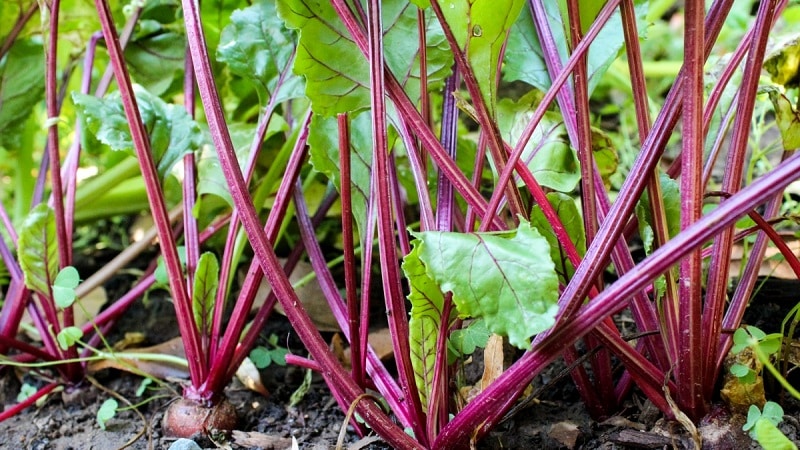A step-by-step guide on how to thin out beets correctly: stages of manipulation and advice from experienced gardeners
Gorgeous-beet not capricious and willingly gives a rich harvest. But still, there is a trick to growing this crop - thinning. This procedure is necessary to increase productivity.
You will learn how to properly thin beets in order to get large, even root crops, and when to thin them, from our article.
Why thin out beets?
A beet seed produces several sprouts, because the usual light brown seed is a cluster of 2-6 dry single-seeded fruits. Often, to insure against unfriendly germination and death of sprouts, seeds are planted more densely than necessary. In such conditions, subsequent thinning of excess seedlings is inevitable.
The benefits of this simple procedure:
- larger root crops grow thanks to the free space in the garden bed;
- seedlings do not shade each other and receive more sunlight and nutrients;
- the strongest and most viable seedlings remain, which will give a large harvest.
About how to eat boiled beets for weight loss, read here.

In what cases is this necessary?
Beets need to be thinned if 2-3 plants have grown in one “nest”. Thickened plantings should be treated when the distance between plants is less than 2-3 cm at the beginning of growth and less than 5-6 cm at the stage of 4-5 true leaves.
What happens if you don't thin out
Crowding in the garden bed will give rise to competition among plants for nutrients; the struggle for sunlight will lead to stretching in height, which will weaken the root system.
Unthinned beets have small, twisted roots, productivity is reduced by 30-50%.
Information about the beneficial properties of beets for women can be found find here.
Duration of the procedure
Beets are thinned at least twice a season. This is due to the fact that the sprouts do not hatch at the same time.
The first thinning is carried out when two true leaves appear.when it is convenient to grasp them with your hands.
Thin out the second time after two to three weeks, when the plant has 4-6 leaves. If necessary, if the distance between the root crops is less than 8-10 cm, a third thinning is performed approximately three weeks before harvest.
It is important not to delay the procedure, otherwise the plant will grow and the yield will decrease.
Advice. You can make a healthy salad from young beets removed during thinning.

Thinning beets correctly
When thinning, it is important to follow simple rules:
- The procedure is performed after watering or rain, since in moist soil the sprouts are better separated from each other.
- The largest and strongest plant is left in each nest, the rest are carefully pulled out or trimmed at the soil level (the remaining root will then die).
- After the first thinning, the distance between the sprouts should be 4-6 cm, after the second - 6-8 cm. To obtain a large vegetable (from 10 cm in diameter), the distance is left at 10-13 cm, but it should be remembered that as the size increases, the quality of the root crops deteriorates , the pulp becomes loose and fibrous.
- If necessary, add soil to the place of the removed plants; the remaining sprouts do not need to be hilled up.
- After thinning, water the bed so that the disturbed soil settles.
Transfer
After thinning, strong sprouts with intact roots can be planted in a new bed or in a place where shoots have not appeared, as well as along plantings of onions, carrots, and potatoes. Young beets tolerate transplantation well and quickly catch up with the plants from the main bed.
Transplantation of seedlings is carried out as follows:
- Prepare the area for future planting in advance: water the soil, add potassium and phosphorus. If planted next to other garden crops, no fertilizing is required.
- Using a stick or finger, make small holes at a distance of 10 cm from each other, leaving approximately 25 cm between the rows.
- Thinning is carried out carefully. To avoid damaging the roots, it is better to use a narrow garden trowel.
- Sprouts removed from the main bed are immediately transferred to the transplant site. The long root is pinched by a third and removed topsexcept for the youngest leaf.
- The root is lowered into the hole, straightened out so that there are no bends or creases, soil is added and compacted a little.
Caring for planted beets
After transplanting, it is recommended to shade the plants: stick branches of a maple or other tree with large leaves nearby. The next day, the seedlings are watered. Otherwise, caring for transplanted beets does not differ from usual.
Advice. It is best to thin out and replant beets on a cloudy day.

How to plant without thinning
There is no need to thin beets if you plant them using seedlings. Seedlings are sown in mid-April. At the stage of two cotyledon leaves, picking is carried out.Sprouts are planted in open ground in mid-May, when the soil warms up to +10°C.
To facilitate thinning work, single-sprout beet varieties are planted, for example:
- Single sprout - mid-season high-yielding variety with juicy tender dark burgundy pulp; suitable for canning and long-term storage; there is only one seed in the fruit cluster, so it requires almost no thinning;
- Bordeaux single seed - mid-season, the taste of root crops is excellent, used for winter storage.
Advice from experienced gardeners
In order for beets to please with the harvest and sweetness of the fruits, experienced vegetable growers use little tricks. Beets will grow unusually sweet if you water them with a solution of certified salt 2-3 times during growth. For 10 liters of water take one tablespoon of salt, the solution consumption is approximately 5 liters per 1 square meter. m.
The vegetable does not grow well in acidic soils, so summer residents recommend liming the area intended for planting root crops in the fall. Scatter 300-500 g of lime per 1 square meter. m and mixed with the top layer of soil using a rake or hoe.
To repel parasites (beet flea beetle, beet weevil), young beet leaves are sprinkled with a mixture of wood ash and tobacco dust in a 1:1 ratio.
Conclusion
One beet seed produces from two to six sprouts, which leads to the need to thin out the plantings. This technique allows you to leave the strongest plants in the garden and provide each of them with sufficient nutrition and light.
The answer to the question of whether it is necessary to thin out beets is obvious. To obtain tasty, beautiful, large root crops, thinning, along with other care measures, is a mandatory procedure.